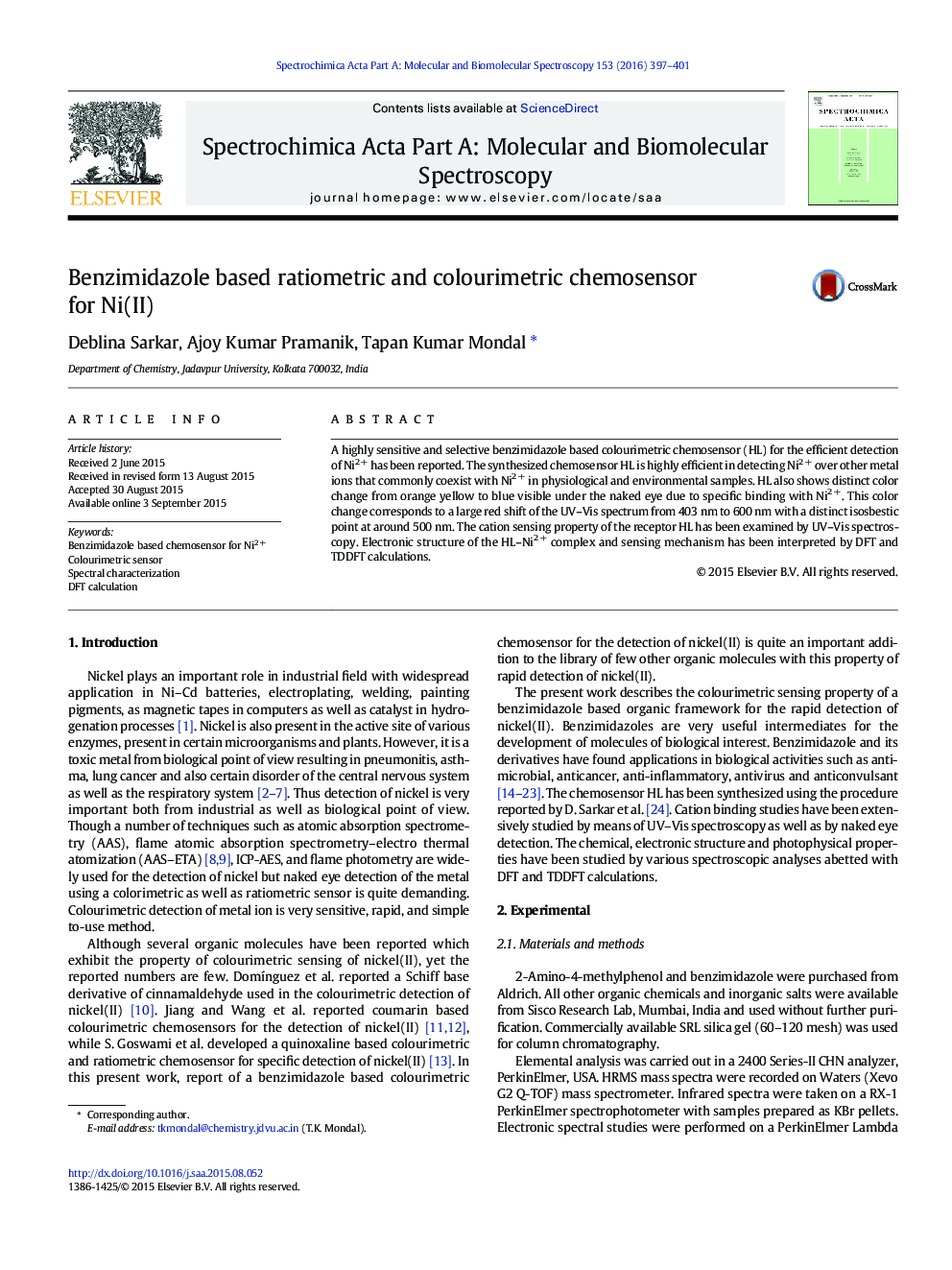| Article ID | Journal | Published Year | Pages | File Type |
|---|---|---|---|---|
| 1228741 | Spectrochimica Acta Part A: Molecular and Biomolecular Spectroscopy | 2016 | 5 Pages |
•Benzimidazole based colourimetric chemosensor (HL) for the efficient detection of Ni2 + has been reported.•HL shows distinct colour change from orange yellow to blue visible under naked eye due to specific binding with Ni2 +.•Electronic structure of HL-Ni2 + complex and sensing mechanism have been interpreted by DFT and TDDFT calculations.
A highly sensitive and selective benzimidazole based colourimetric chemosensor (HL) for the efficient detection of Ni2 + has been reported. The synthesized chemosensor HL is highly efficient in detecting Ni2 + over other metal ions that commonly coexist with Ni2 + in physiological and environmental samples. HL also shows distinct color change from orange yellow to blue visible under the naked eye due to specific binding with Ni2 +. This color change corresponds to a large red shift of the UV–Vis spectrum from 403 nm to 600 nm with a distinct isosbestic point at around 500 nm. The cation sensing property of the receptor HL has been examined by UV–Vis spectroscopy. Electronic structure of the HL–Ni2 + complex and sensing mechanism has been interpreted by DFT and TDDFT calculations.
Graphical abstractThe sensing ability of the receptor HL for Ni2 + has been extensively studied using UV–Vis spectroscopy. HL shows distinct color change from orange yellow to blue, visible under the naked eye, due to specific binding with nickel(II). Interference study also shows that HL is highly efficient in detecting Ni2 + over all other metal ions that commonly coexist with Ni2 + in physiological and environmental samples.Figure optionsDownload full-size imageDownload as PowerPoint slide
